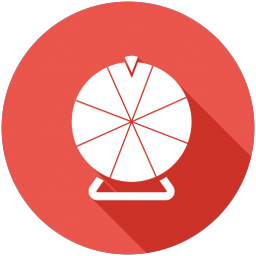How Discount Format Affects Conversion And Spending
Relevant topics Archive, Conversion
Buy more to save more, money off, sale, special offer, spin the lucky wheel... So many different expressions to achieve one goal – conversion. But which method really works?
There are so many chance games out there for a reason – from a chips box offering customers to win 1 out 1000 prizes to scratch cards found in online delivery boxes, encouraging customers to discover one of the amazing treats. Are you wondering why so many companies keep doing it?
Luck works in mysterious ways
JBL, a known brand for “speakers, headphones and more” runs “scratch and win” competitions from time to time. An inviting call to action highlights all the fantastic prizes a customer can win. Scratch card contains a code, which has to be entered into a promotional website to reveal the prize (see image below).
(https://jbl-nld.basebuilder.com/, 2020)
Pringles, a well-known chips brand, also runs such luck competitions. What if today is the lucky day?
(https://www.pringles.com/nl/home.html, 2020)
Discounts won from promotional activities generate higher conversion rates and overall spending. This is true even if the discount won is smaller than the straight discount. A straight discount is a discount given to customers without them having to put any effort into getting it. It’s worth noting that the increase in sales in this context is driven by more people buying rather than a small group of consumers buying more.
Winning a promotional game will induce perceptions of luck. This is because the game contains the element of chance and the participants are not aware whether they will win or not. Straight discounts do not contain any element of chance and are thus unlikely to alter perceptions of luck.
Luck induces a positive action-oriented state. In turn, luck leads to greater risk-taking and confidence.
It propels consumers to act on opportunities.
As a result from the shift in mindset, a lucky consumer is more likely to engage in an action, which means making a purchase in this case.
Moreover, these perceptions of luck will increase the store's affective attitude. This simply means that the shop becomes more attractive since it offered a fun activity to engage in. People show appreciation for the store eliciting luck. Because let’s face it – who doesn’t want that extra bit of luck?
Make it fun!
Promotional games can be used strategically as a cost-efficient way to enhance store loyalty and build brand equity. Marketing managers should consider offering creative games of chance over straight discounts.
Sweepstakes, contests and free gifts are intrinsically fun to watch and participate in.
Priming customers to feel lucky could positively increase their confidence and in turn, conversion. Promotional emails, with the subject line “Are you feeling lucky?” and a spinning wheel inside of the email, which contains a number of hidden discounts is an example of this. Similar landing pages can be created on a shop’s website to distribute discounts, or even printed on leaflets or magazine inserts to scratch and reveal a prize.
These effects emerge because more people are buying. Hence, having a large customer base is crucial for longer-term success. Using a simple promotional game could help achieve this.
Boundary conditions
However, it’s important to note that these principles are stronger for some products over others. For hedonic products, which are fun to purchase the impact is more pronounced. Hence, games of chance are easier to use for products like music speakers, candles and food items that bring consumers joy. If it is a mundane purchase, a game of chance will have a smaller chance of success. Think of home cleaning supplies, for example. However, if your product is utilitarian in nature, get creative and offer a promotional game, which will induce a hedonic state, allowing customers to progress through a difficult purchase easier.
Take away points
- Offer a game of chance over a straight discount to increase conversion.
- Lucky customers tend to spend more and be more loyal.
- The effect is stronger for those who believe in luck.
- The effect is also stronger for hedonic products over utilitarian.
Further Reading
-
The Positive Side of Negative Branding
When Negative Branding works
''Read this, you loser..''
Quiz time! What do Weekend Offender, Gucci Guilty, Monster Energy, Fresh Ego Kid, Arrogant Bastard Ale, Dior Sauvage have in common?
That’s right: these are all brand or product names with a negative, dark or unpleasant connotation. Terms like offender, monster, and bastard are all related to negative concepts in our brains.
But did you know that this type of “negative” branding can lead to the most positive outcomes? Recent research shows that negative branding can make brands more appealing to members of the target audience, and increases their willingness to pay.
In this blog, you’ll learn why and when negative branding works, so you can use it to your advantage.
Are you ready to discover the bright side of negative branding? Just keep reading!


